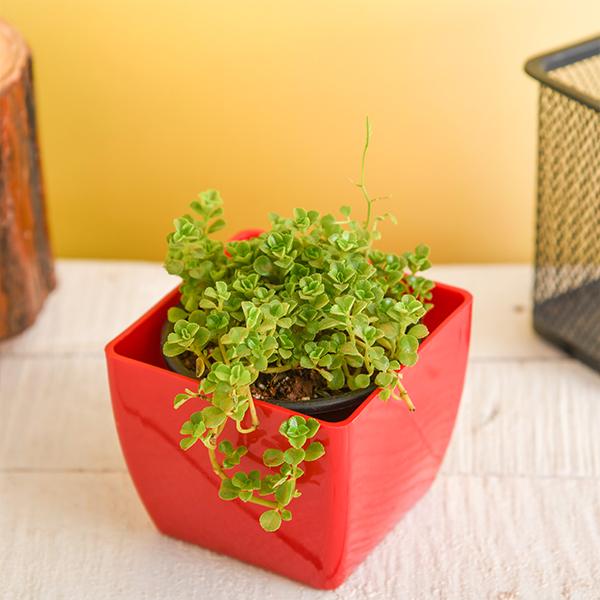
Helxine soleirolii, Baby Tears - Succulent Plant
(MRP Inclusive of all taxes)
- Shipping ₹79 for entire order
- Dispatch in 7 days
- Country of origin: India

(MRP Inclusive of all taxes)
 Save 45%
Save 45%
Top 4 Die Hard Succulents Pack Transform your indoor or outdoor space with our Top 4 Die Hard Succulents Pack, featuring a curated selecti...
View full details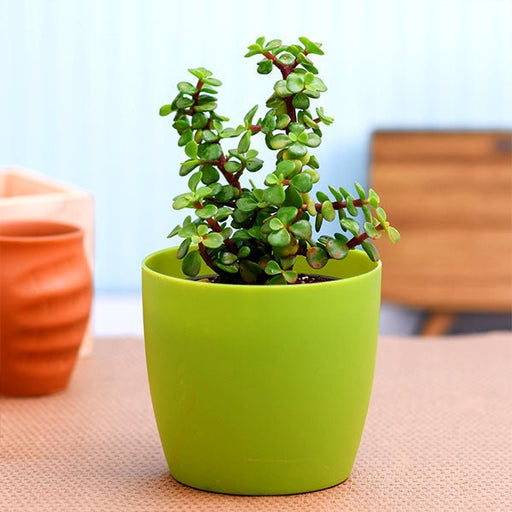
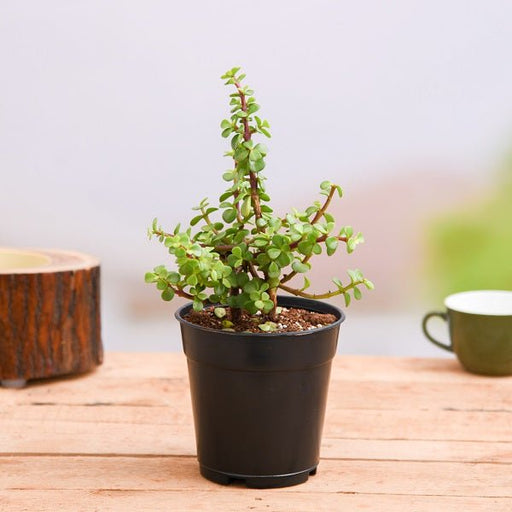 Save up to 20%
Save up to 20%
Elephant Bush, Portulacaria afra, Jade Plant (Green) - Succulent Plant The Elephant Bush, scientifically known as Portulacaria afra, is a ...
View full details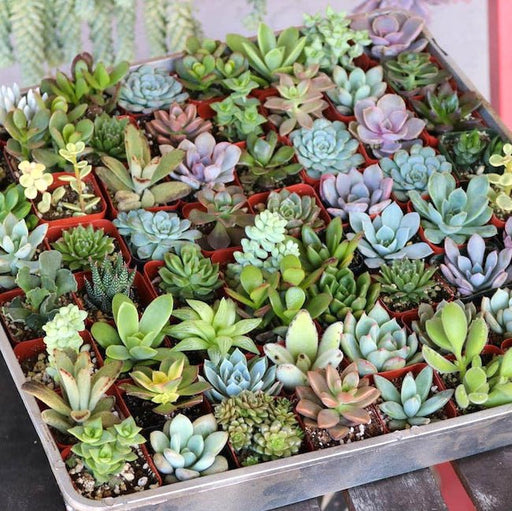
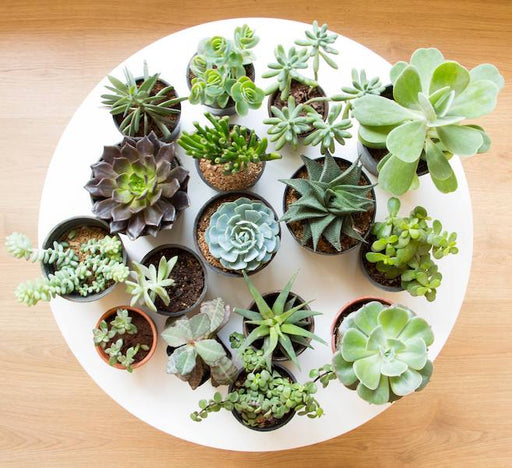 Save up to 50%
Save up to 50%
Mini Succulent Garden Pack Transform your space with our Mini Succulent Garden Pack, featuring a delightful collection of 4 any variety beautiful s...
View full details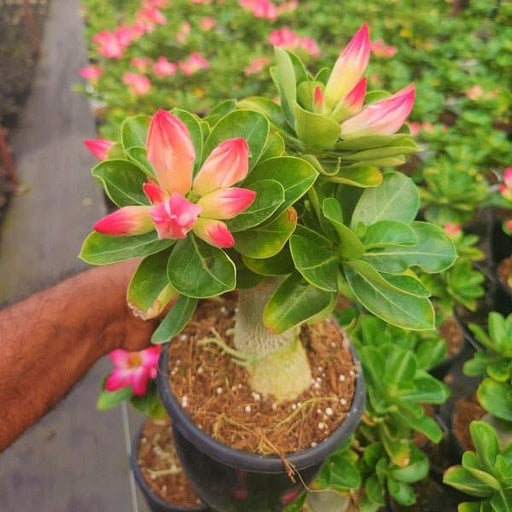
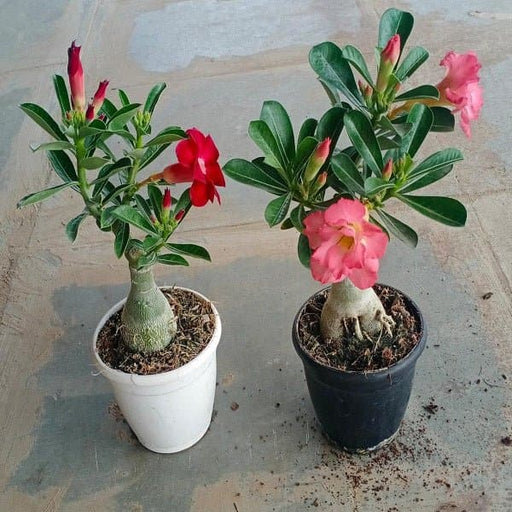 Save 24%
Save 24%
Set of 2 Bonsai Looking Grafted Adeniums Transform your indoor or outdoor space with our exquisite Set of 2 Bonsai Looking Grafted Adenium...
View full details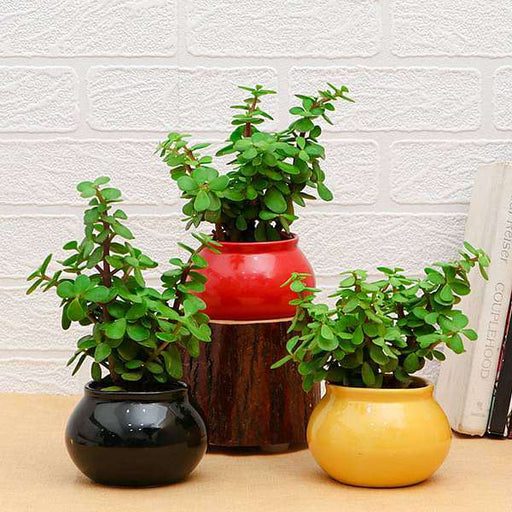 Save 22%
Save 22%
Pack of 3 Good Luck Jade Plants in Ceramic Pots Bring a touch of nature into your home with our Pack of 3 Good Luck Jade Plants, featuring...
View full details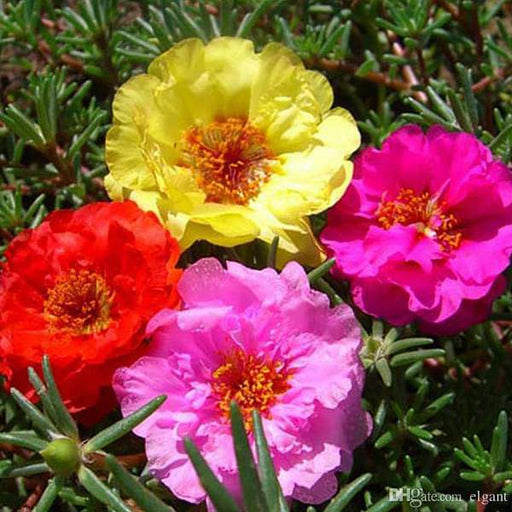 Save 17%
Save 17%
Portulaca, 9 O'Clock (Any Color) - Plant The Portulaca, commonly known as 9 O'Clock, is a vibrant, succulent flowering plant that thrives ...
View full details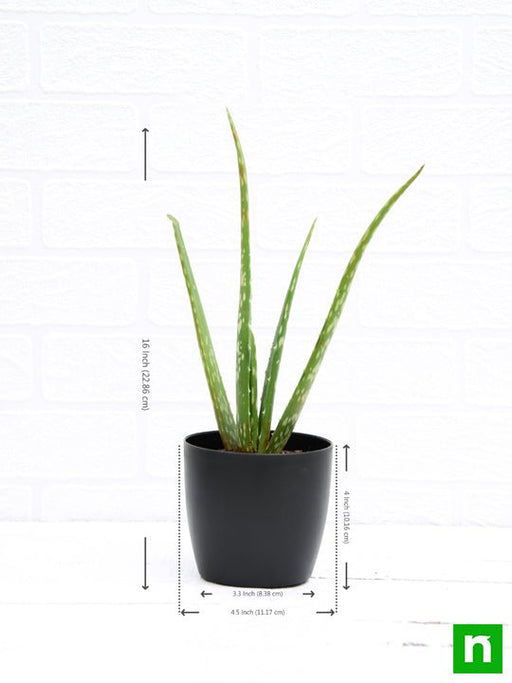
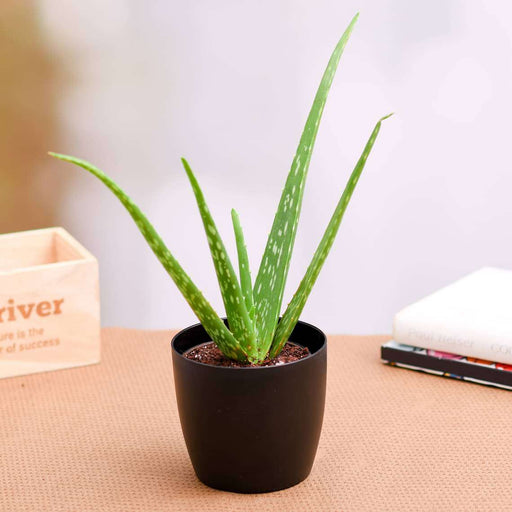 Save 26%
Save 26%
Aloe Vera - Succulent Plant Aloe Vera, scientifically known as Aloe barbadensis miller, is a succulent plant renowned for its thick, flesh...
View full details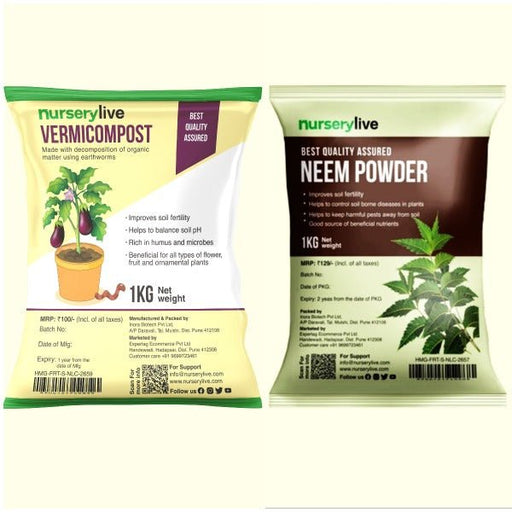 Save 15%
Save 15%
Pack of Vermicompost and Neem Cake for House Plants Transform your indoor garden with our premium Pack of Vermicompost and Neem Cake, spec...
View full details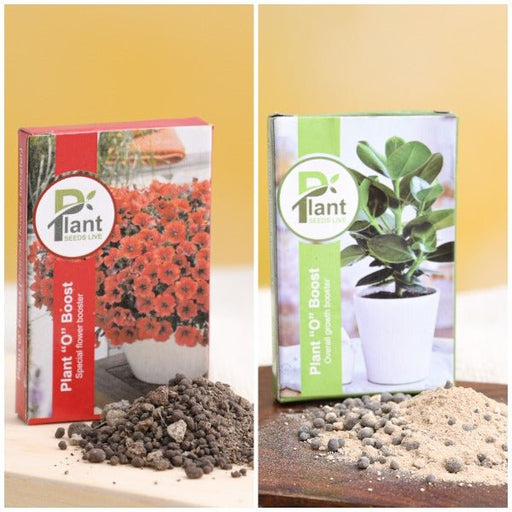
Pack of Plant Growth and Flower Boosters Unlock the full potential of your garden with our Pack of Plant Growth and Flower Boosters! This ...
View full details Save 38%
Save 38%
Combo of Jeevamrut and Neem Raksha for Easy Growth and Protection of Houseplants Transform your indoor garden with our exclusive combo of ...
View full details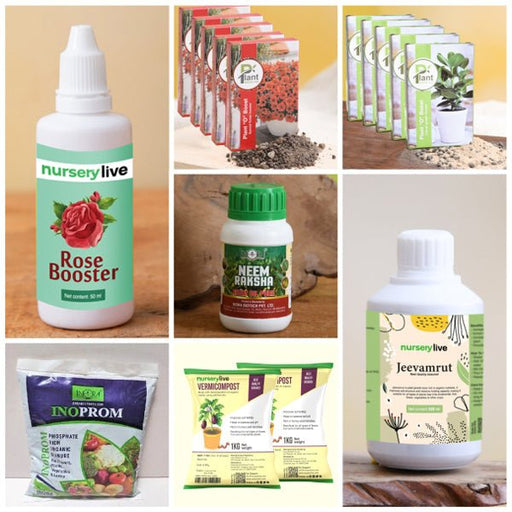 Save 22%
Save 22%
Plant Nutrients Kit (Pack of 16) for a Healthy Garden Transform your garden into a lush paradise with our Plant Nutrients Kit, featuring 1...
View full details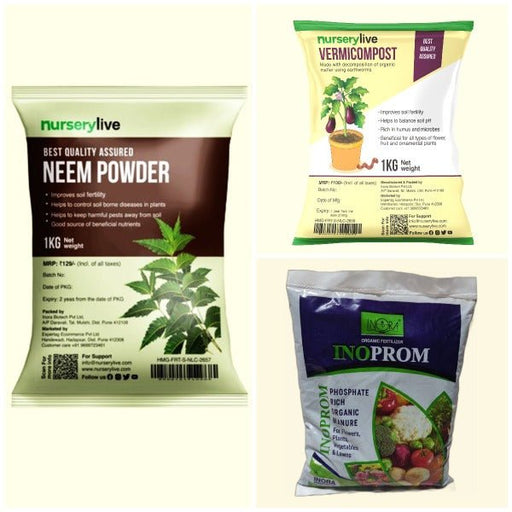 Save 16%
Save 16%
Combo of Top Plant Fertilizers Elevate your gardening game with our exclusive Combo of Top Plant Fertilizers, featuring two bags of premiu...
View full details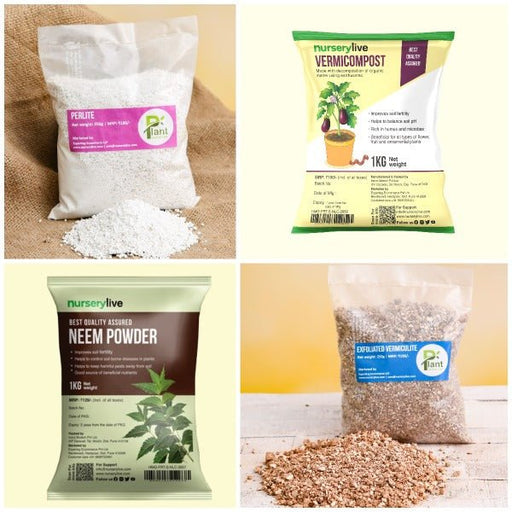 Save 24%
Save 24%
Pack of 4 Additives to Make Soil Healthy and Nutrient Rich Transform your garden into a thriving ecosystem with our Pack of 4 Additives de...
View full details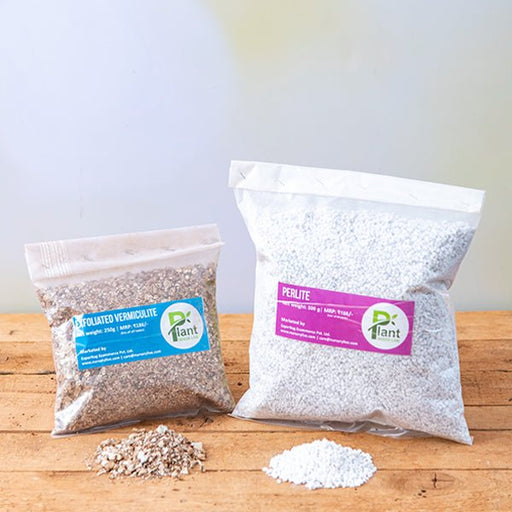 Save 30%
Save 30%
Transform your gardening experience with our premium Combo of Perlite and Vermiculite. This unique blend is designed to enhance soil aeration and ...
View full details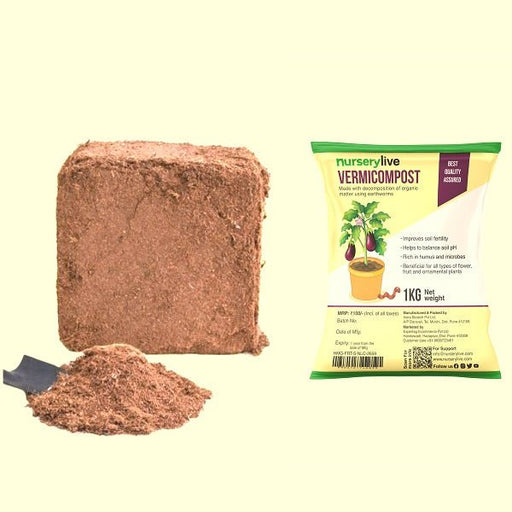 Save 27%
Save 27%
Combo of 2 Vermicompost and Cocopeat - Enrich Your Soil Naturally! Transform your garden into a thriving ecosystem with our Combo of 2 Ver...
View full details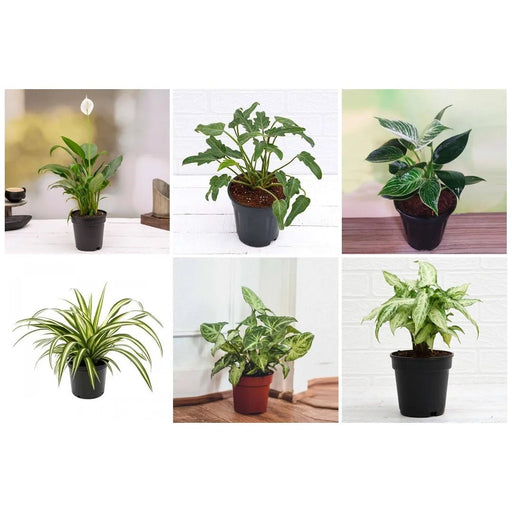
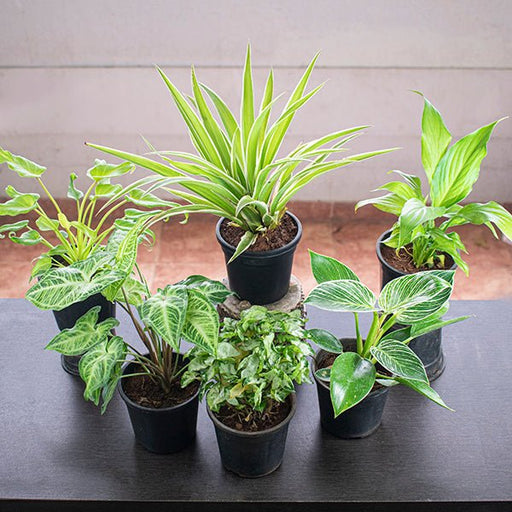 Save 35%
Save 35%
Best 6 Plants for Perfect Indoor Garden Transform your living space into a lush oasis with our curated collection of the Best 6 Plants for a...
View full details
 Save up to 50%
Save up to 50%
Mini Succulent Garden Pack Transform your space with our Mini Succulent Garden Pack, featuring a delightful collection of 4 any variety beautiful s...
View full details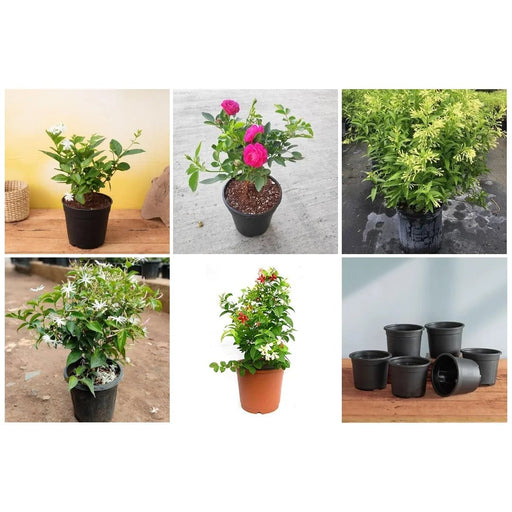
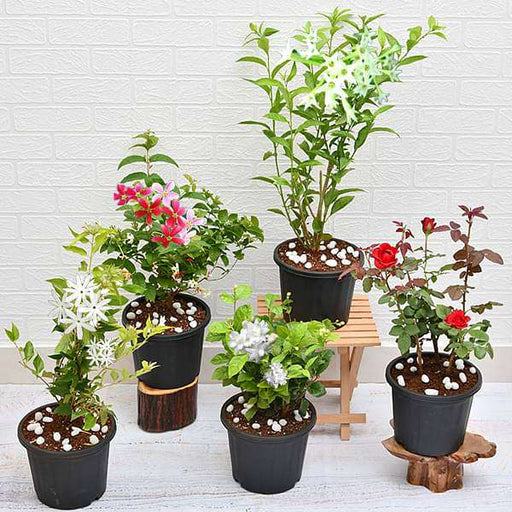 Save 30%
Save 30%
5 Best Fragrant Plants Transform your garden or indoor space into a fragrant paradise with our curated selection of the 5 Best Fragrant Plants. Th...
View full details
 Save 24%
Save 24%
Set of 2 Bonsai Looking Grafted Adeniums Transform your indoor or outdoor space with our exquisite Set of 2 Bonsai Looking Grafted Adenium...
View full details Save 45%
Save 45%
Top 4 Die Hard Succulents Pack Transform your indoor or outdoor space with our Top 4 Die Hard Succulents Pack, featuring a curated selecti...
View full details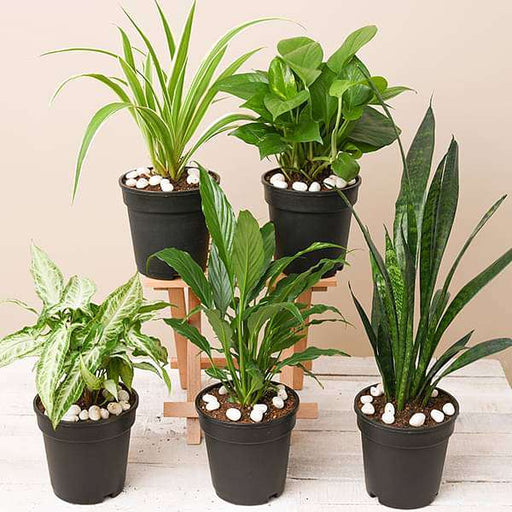
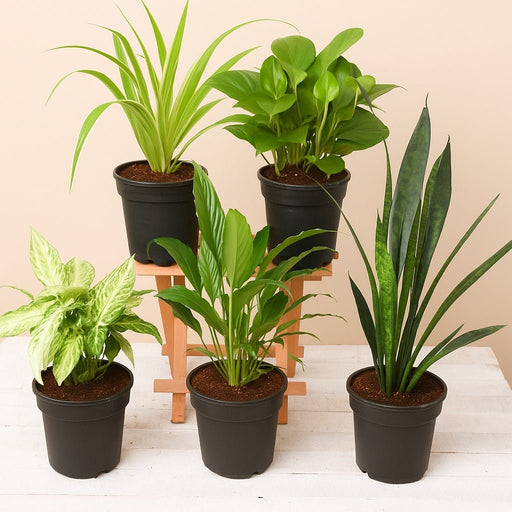 Save 30%
Save 30%
5 Best Indoor Plants Pack Transform your living space into a lush oasis with our '5 Best Indoor Plants Pack.' This carefully curated collection fe...
View full details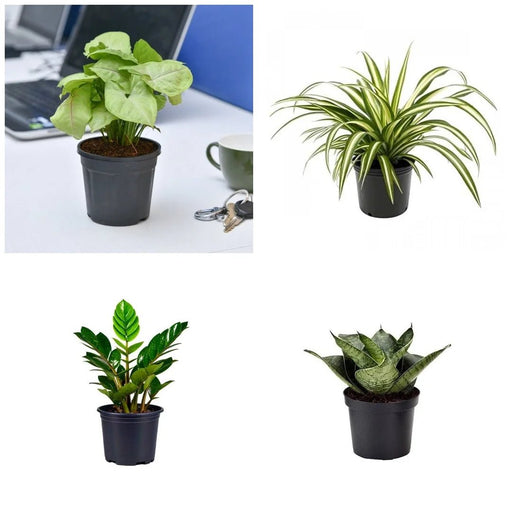
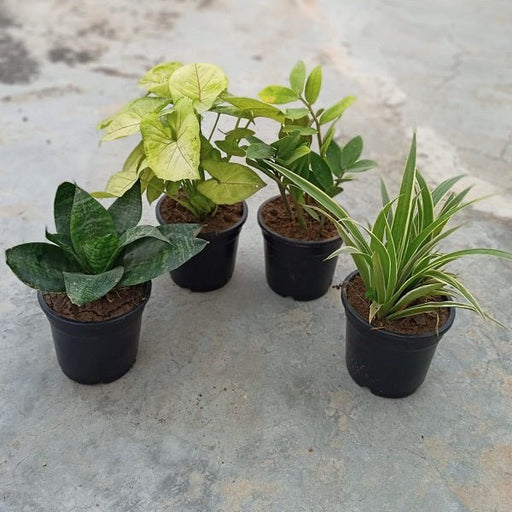 Save 25%
Save 25%
Set of 4 Evergreen Air Purifier Plant Pack Transform your indoor space into a lush, green oasis with our Set of 4 Evergreen Air Purifier Pla...
View full details| SrNo | Item Name | Qty |
|---|---|---|
| 2 | Helxine soleirolii, Baby Tears Succulent Plant in 3 inch (8cm) Pot | 1 |
| 3 | 3.3 inch (8 cm) Square Plastic Planter with Rounded Edges (Red) | 1 |
Helxine soleirolii, commonly known as Baby Tears, is a charming succulent plant that captivates with its lush, tiny leaves and cascading growth habit. Native to the tropical regions of the world, this perennial plant thrives in a variety of environments, making it a popular choice for indoor gardening enthusiasts. Its vibrant green foliage creates a stunning visual appeal, perfect for hanging baskets or as a ground cover in terrariums.
What makes Baby Tears special is its ability to adapt to different light conditions while maintaining its lush appearance. This resilient plant not only enhances the aesthetic of any space but also contributes to improved air quality, making it an excellent choice for homes and offices. Its unique texture and growth pattern add a touch of elegance to any indoor garden.
One of the standout features of Helxine soleirolii is its ability to thrive in low-light conditions, making it an ideal plant for beginners or those with less-than-ideal lighting. Additionally, it is known for its rapid growth, allowing for quick coverage in pots or hanging arrangements.
As a low-maintenance plant, Baby Tears contributes positively to indoor environments by improving air quality and promoting humidity. Its ability to thrive in various conditions makes it a sustainable choice for eco-conscious gardeners.
Also known as Baby Tears, this charming little plant is the life of the party in the succulent world. With its lush, green foliage that cascades like a waterfall, it’s the perfect companion for those who want to add a touch of whimsy to their indoor jungle. Just don’t let it get too dry; it’s a drama queen when it comes to hydration!
Caring for Helxine soleirolii is like nurturing a diva. It demands well-draining soil and a sprinkle of water, but not too much! Keep it in bright, indirect light, and it will reward you with a vibrant display of tiny leaves that will make your friends green with envy.
If you’re looking to elevate your home decor, look no further than Baby Tears. This succulent is the ultimate accessory, adding a pop of greenery to any room. Place it in a stylish pot, and watch as it transforms your space into a botanical wonderland.
Baby Tears is the perfect plant for those dimly lit corners of your home. It thrives in low light, making it an ideal choice for anyone who has a penchant for shadowy nooks. Just remember, it still needs some light to shine, so don’t leave it in the dark forever!
Want to expand your succulent family? Propagating Helxine soleirolii is as easy as pie! Simply snip a few stems, let them callous over, and plant them in soil. Before you know it, you’ll have a mini jungle of Baby Tears, ready to take over your home.
Like any good diva, Baby Tears can attract a few unwanted guests. Keep an eye out for pests like mealybugs and spider mites. A gentle wipe with a damp cloth or a spray of insecticidal soap will send those pesky intruders packing!
Establishing a watering schedule for your Helxine soleirolii is crucial. Too much water, and it’ll sulk; too little, and it’ll throw a tantrum. Aim for a balance, watering when the top inch of soil feels dry, and your succulent will thrive like the star it is.
Helxine soleirolii prefers a well-draining soil mix, ideally one designed for succulents. Think of it as the plant equivalent of a luxury spa treatment—no soggy bottoms allowed! A good mix will keep your Baby Tears happy and healthy.
Baby Tears isn’t a high-maintenance plant, but a little fertilizer goes a long way. Feed it with a diluted succulent fertilizer during the growing season, and it will reward you with lush growth. Just don’t overdo it; too much food can lead to a case of the “stomach aches.”
Choosing the right container for your Helxine soleirolii is like picking the perfect outfit. Opt for pots with drainage holes to prevent waterlogging, and consider a stylish ceramic or terracotta pot to showcase its beauty. After all, even plants deserve to look fabulous!
While Helxine soleirolii is the star of the show, there are other varieties worth exploring. From the classic Baby Tears to its more exotic cousins, each brings its own flair to the succulent family. Dive into the world of succulents and discover your new favorites!
Finding the perfect spot for your Baby Tears is essential. It loves bright, indirect light but can tolerate some shade. Whether it’s on a sunny windowsill or a cozy shelf, just make sure it’s not too far from the action—this plant loves to be the center of attention!
Helxine soleirolii, commonly known as Baby Tears, is a charming succulent that loves to spread joy with its lush, tiny leaves. This plant is like the overachiever of the succulent world, thriving in bright, indirect light while adding a touch of whimsy to your indoor jungle. Who knew tiny leaves could pack such a punch
Caring for Baby Tears is as easy as pie—if pie were a succulent! Keep it in well-draining soil, water it when the top inch dries out, and give it bright, indirect light. Avoid soggy feet; this plant prefers to sip rather than swim. With a little love, it’ll flourish like a star!
Absolutely! Helxine soleirolii is the ultimate indoor diva. It thrives in pots, hanging baskets, or even as a ground cover in terrariums. Just ensure it gets enough light and a sprinkle of water, and watch it transform your space into a lush paradise. Who needs a tropical vacation when you have Baby Tears
Good news for pet parents! Helxine soleirolii is non-toxic to cats and dogs. So, you can let your furry friends roam free without worrying about them munching on your beloved Baby Tears. Just keep an eye on them; they might prefer your succulent over their kibble!
Watering Baby Tears is like a dance—find the right rhythm! Water when the top inch of soil feels dry, usually every 1-2 weeks. In winter, let it take a breather and water less frequently. Remember, overwatering is the enemy; this plant prefers a light sip over a full-on splash!
Helxine soleirolii loves a well-draining soil mix, like a succulent’s version of a luxury spa. A blend of potting soil, perlite, and sand works wonders. This ensures that while it enjoys a drink, it doesn’t end up drowning in soggy soil. Happy roots make for a happy plant!
Yes, you can! Propagating Baby Tears is like sharing the love. Simply take a stem cutting, let it dry for a day, and then plant it in well-draining soil. Keep it moist, and soon you’ll have a mini jungle of Baby Tears. It’s the gift that keeps on giving!
While Baby Tears is generally pest-resistant, keep an eye out for pesky mealybugs and spider mites. If they crash the party, a gentle wipe with soapy water or neem oil will send them packing. Remember, a little vigilance goes a long way in keeping your succulent happy and healthy!
Helxine soleirolii is a light lover but prefers indirect sunlight—think of it as a diva avoiding harsh stage lights. Place it near a window with filtered light, and it’ll thrive. Too much direct sun can scorch those delicate leaves, so find that sweet spot for optimal growth!
While Baby Tears can tolerate low light, it’s like asking a sunflower to thrive in the shade. It may become leggy and lose its vibrant charm. For best results, provide bright, indirect light. Your plant will thank you with lush growth and a happy dance of tiny leaves!
Helxine soleirolii enjoys a cozy climate, thriving best in temperatures between 60°F to 75°F. It’s not a fan of extreme cold or heat, so keep it away from chilly drafts or blazing sun. Think of it as your plant’s Goldilocks zone—just right for optimal growth and happiness!